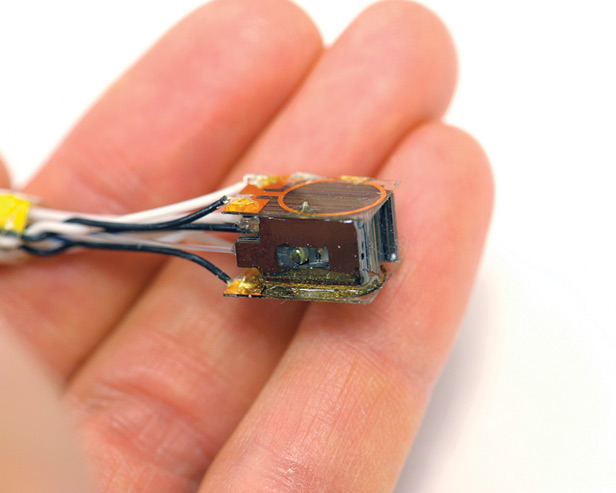Source: “Magnetoencephalography with a chip-scale atomic magnetometer”
Svenja Knappe et al.
Biomedical Optics Express 3(5): 981–990
Don’t settle for half the story.
Get paywall-free access to technology news for the here and now.

Source: “Magnetoencephalography with a chip-scale atomic magnetometer”
Svenja Knappe et al.
Biomedical Optics Express 3(5): 981–990
Don’t settle for half the story.
Get paywall-free access to technology news for the here and now.
MIT Technology Review provides an intelligent and independent filter for the flood of information about technology.
Subscribe now Already a subscriber? Sign inResults: A prototype sensor the size of a sugar cube can measure the magnetic fields produced by electrical activity in the brain, report researchers at the National Institute of Standards and Technology in Boulder, Colorado, and their colleagues.
Why it matters: Commercial devices based on the new technology may prove useful for detecting changes in brain behavior caused by brain injury. Such devices could be smaller, cheaper, and more portable than MRI or CT scan machines or conventional brain-wave detectors, which require bulky cooling systems filled with potentially dangerous coolants such as liquid helium. The researchers say the new devices, if mass-produced, could be affordable even for high-school football teams, which could use them to check for brain injury after games. Eventually, the researchers say, they might be used to detect signals from the brain that could be used to control prosthetics.
Methods: Researchers filled a small cube with gaseous rubidium, which absorbs light differently depending on the strength of the magnetic field it’s exposed to. Optical fibers attached to the cube shine lasers into the rubidium and detect the light transmitted through it. In a magnetically shielded room, the team measured the electrical fields produced by subjects wearing the sensor.
Next Steps: The researchers believe that better optics could make the sensor as sensitive as the bulky standard devices. In addition to improving the optics, they plan to combine as many as 100 sensors into one device to help them pinpoint the origin of magnetic fields.
Dividing Cancer
Newly identified differences between breast tumors could help doctors tailor treatments
Source: “The genomic and transcriptomic architecture of 2,000 breast tumours reveals novel subgroups”
Samuel Aparicio et al.
Nature, published online April 18, 2012
Results: Researchers identified 10 types of breast cancer by measuring the genetic differences between tumors.
Why it matters: Identifying types of breast cancer could help doctors provide more accurate prognoses. It might also lead to improved treatments. Drugs that aren’t effective for the general patient population might prove effective for patients with certain types of breast cancer. By grouping the tumors into types, the researchers were able to identify a new class of patients who might benefit from an existing treatment.
Methods: The researchers studied nearly 2,000 breast tumor samples. They screened for abnormal parts of each tumor’s genome using a technique called DNA hybridization, which enabled them to efficiently examine the DNA and the molecular products of genes in each sample. The team then used a type of mathematical analysis to group similar tumors according to these genomic abnormalities.
Next Steps: The international team, which is based in part at the University of Cambridge and the University of British Columbia, is currently sequencing the genomes of some of the tumors to build a more complete picture of the genomic changes in breast cancer.